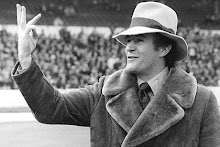It seems natural that I should write my first entry on the topic that prompted me to write this in the first place: my PhD research.
I work in the Ion Trapping Group in the Physics Department of Imperial College London. As the name suggests, our work involves the trapping of atomic ions. These are atoms with either too many or too few electrons orbiting the nucleus, such that there is a net electronic charge. It is the fact that these ions are charged that makes it easier to grab hold of them, using the Coulomb interaction (the interaction that means that like charges repel each other and opposite charges attract). In order to confine these ions we create a copper electrode structure (it's about 2cm in diameter, inside a larger vacuum chamber) and apply voltages to it so that the ions are stuck in the middle of the trap along one direction. We then add a big magnet to stop the ions leaking out in the other directions. These types of trap are used for lots of different things: to trap charged anti-matter particles (because the particles are held using electromagnetic forces, they never actually touch anything, otherwise they would annihilate), testing the fundamental behaviour of atoms, and to do work in the field of 'quantum information'.
What did I do with my ions during my PhD? My main aim was to try and perform a kind of 'laser cooling' that had not been demonstrated in this kind of trap before. This type of cooling is called resolved-sideband cooling, and it allows you to cool the ions very close to absolute zero, 0 Kelvin. The way that laser cooling generally works is that you generate your laser-ion interaction in such a way that the ion absorbs more light when it is travelling towards the laser than when it is moving away. Each time the ion absorbs some light it feels a push, so if you tune things right, then the ion will slow down. Imagine that you are on a swing with someone pushing you. Usually they give you a push when you are at the highest point of your swing, which increases the size of your swing. If instead they gave you a small shove as you moved towards them, you would stop pretty quickly. The principle is the same here, and we bring the ion close to rest in a few milliseconds.
 |
| A single ion, viewed on a camera |

